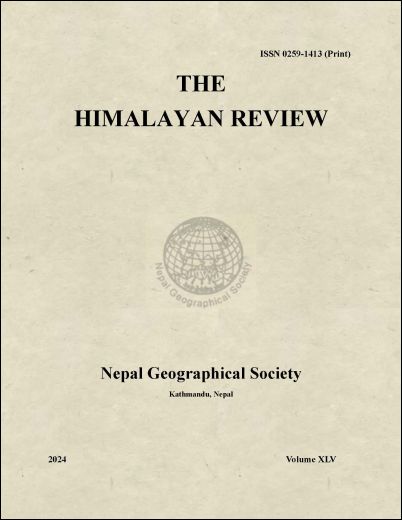Urban Climate Change in Populated Kathmandu Valley, Nepal: A Case Study
DOI:
https://doi.org/10.3126/hr.v45i1.68172Keywords:
Climate change, Urban heat island, Normalized Difference Vegetation Index, Land use land cover changeAbstract
Kathmandu Valley, the capital and commercial hub of Nepal, is experiencing rapid and unmanaged urbanization, leading to poor environmental conditions. The population, a key indicator of urbanization, has been growing at an average rate of 2.08% per year. This population growth from 1990 to 2021 has significantly altered land use, resulting in increased temperatures and transforming the valley into an Urban Heat Island (UHI). This study examines the effects of UHI by comparing normalized Land Surface Temperature (LST) in Kathmandu Valley and assessing the influence of land use changes on UHI intensity between 1990 and 2021. The result shows that built-up area has expanded by 30.7% of the total area, while the agricultural area has decreased by 33.59%. These changes in land use and land cover have caused a significant temperature increase at a rate of 0.038 °C per year. Green space density, measured by the Normalized Difference Vegetation Index (NDVI), has declined from 35.59% to 29.17%, being replaced by built-up areas. LST is inversely related to the presence of surface vegetation. The UHI phenomenon is observed to be stronger in urban centers such as Tribhuvan International Airport, Patan industrial area, Kritipur, and Kalanki, while it is weaker in semi-urban regions like Suryabinayak and Godawari. As climate change poses significant health and environmental challenges, adaptation has become a major issue for developing countries. Therefore, it is essential to implement change control and mitigation strategies specifically tailored to each urban region.




